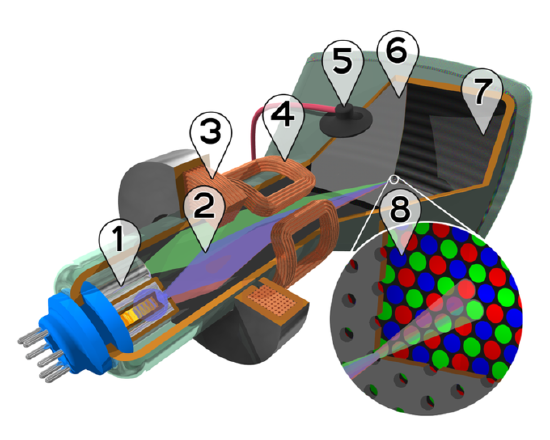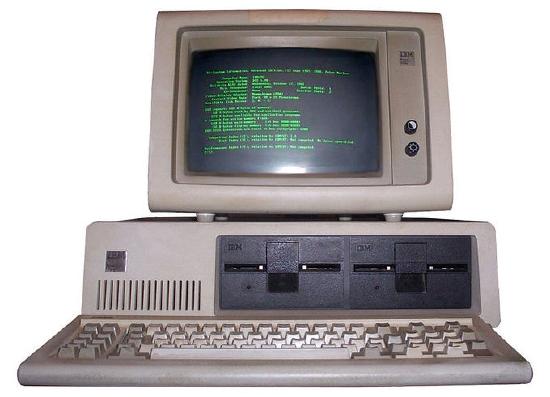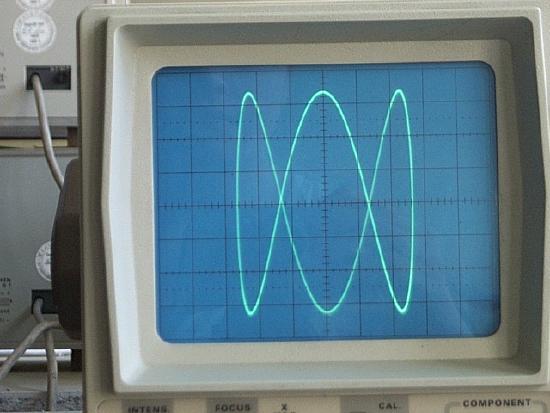18.5: Applications
- Page ID
- 14554
\( \newcommand{\vecs}[1]{\overset { \scriptstyle \rightharpoonup} {\mathbf{#1}} } \)
\( \newcommand{\vecd}[1]{\overset{-\!-\!\rightharpoonup}{\vphantom{a}\smash {#1}}} \)
\( \newcommand{\dsum}{\displaystyle\sum\limits} \)
\( \newcommand{\dint}{\displaystyle\int\limits} \)
\( \newcommand{\dlim}{\displaystyle\lim\limits} \)
\( \newcommand{\id}{\mathrm{id}}\) \( \newcommand{\Span}{\mathrm{span}}\)
( \newcommand{\kernel}{\mathrm{null}\,}\) \( \newcommand{\range}{\mathrm{range}\,}\)
\( \newcommand{\RealPart}{\mathrm{Re}}\) \( \newcommand{\ImaginaryPart}{\mathrm{Im}}\)
\( \newcommand{\Argument}{\mathrm{Arg}}\) \( \newcommand{\norm}[1]{\| #1 \|}\)
\( \newcommand{\inner}[2]{\langle #1, #2 \rangle}\)
\( \newcommand{\Span}{\mathrm{span}}\)
\( \newcommand{\id}{\mathrm{id}}\)
\( \newcommand{\Span}{\mathrm{span}}\)
\( \newcommand{\kernel}{\mathrm{null}\,}\)
\( \newcommand{\range}{\mathrm{range}\,}\)
\( \newcommand{\RealPart}{\mathrm{Re}}\)
\( \newcommand{\ImaginaryPart}{\mathrm{Im}}\)
\( \newcommand{\Argument}{\mathrm{Arg}}\)
\( \newcommand{\norm}[1]{\| #1 \|}\)
\( \newcommand{\inner}[2]{\langle #1, #2 \rangle}\)
\( \newcommand{\Span}{\mathrm{span}}\) \( \newcommand{\AA}{\unicode[.8,0]{x212B}}\)
\( \newcommand{\vectorA}[1]{\vec{#1}} % arrow\)
\( \newcommand{\vectorAt}[1]{\vec{\text{#1}}} % arrow\)
\( \newcommand{\vectorB}[1]{\overset { \scriptstyle \rightharpoonup} {\mathbf{#1}} } \)
\( \newcommand{\vectorC}[1]{\textbf{#1}} \)
\( \newcommand{\vectorD}[1]{\overrightarrow{#1}} \)
\( \newcommand{\vectorDt}[1]{\overrightarrow{\text{#1}}} \)
\( \newcommand{\vectE}[1]{\overset{-\!-\!\rightharpoonup}{\vphantom{a}\smash{\mathbf {#1}}}} \)
\( \newcommand{\vecs}[1]{\overset { \scriptstyle \rightharpoonup} {\mathbf{#1}} } \)
\( \newcommand{\vecd}[1]{\overset{-\!-\!\rightharpoonup}{\vphantom{a}\smash {#1}}} \)
\(\newcommand{\avec}{\mathbf a}\) \(\newcommand{\bvec}{\mathbf b}\) \(\newcommand{\cvec}{\mathbf c}\) \(\newcommand{\dvec}{\mathbf d}\) \(\newcommand{\dtil}{\widetilde{\mathbf d}}\) \(\newcommand{\evec}{\mathbf e}\) \(\newcommand{\fvec}{\mathbf f}\) \(\newcommand{\nvec}{\mathbf n}\) \(\newcommand{\pvec}{\mathbf p}\) \(\newcommand{\qvec}{\mathbf q}\) \(\newcommand{\svec}{\mathbf s}\) \(\newcommand{\tvec}{\mathbf t}\) \(\newcommand{\uvec}{\mathbf u}\) \(\newcommand{\vvec}{\mathbf v}\) \(\newcommand{\wvec}{\mathbf w}\) \(\newcommand{\xvec}{\mathbf x}\) \(\newcommand{\yvec}{\mathbf y}\) \(\newcommand{\zvec}{\mathbf z}\) \(\newcommand{\rvec}{\mathbf r}\) \(\newcommand{\mvec}{\mathbf m}\) \(\newcommand{\zerovec}{\mathbf 0}\) \(\newcommand{\onevec}{\mathbf 1}\) \(\newcommand{\real}{\mathbb R}\) \(\newcommand{\twovec}[2]{\left[\begin{array}{r}#1 \\ #2 \end{array}\right]}\) \(\newcommand{\ctwovec}[2]{\left[\begin{array}{c}#1 \\ #2 \end{array}\right]}\) \(\newcommand{\threevec}[3]{\left[\begin{array}{r}#1 \\ #2 \\ #3 \end{array}\right]}\) \(\newcommand{\cthreevec}[3]{\left[\begin{array}{c}#1 \\ #2 \\ #3 \end{array}\right]}\) \(\newcommand{\fourvec}[4]{\left[\begin{array}{r}#1 \\ #2 \\ #3 \\ #4 \end{array}\right]}\) \(\newcommand{\cfourvec}[4]{\left[\begin{array}{c}#1 \\ #2 \\ #3 \\ #4 \end{array}\right]}\) \(\newcommand{\fivevec}[5]{\left[\begin{array}{r}#1 \\ #2 \\ #3 \\ #4 \\ #5 \\ \end{array}\right]}\) \(\newcommand{\cfivevec}[5]{\left[\begin{array}{c}#1 \\ #2 \\ #3 \\ #4 \\ #5 \\ \end{array}\right]}\) \(\newcommand{\mattwo}[4]{\left[\begin{array}{rr}#1 \amp #2 \\ #3 \amp #4 \\ \end{array}\right]}\) \(\newcommand{\laspan}[1]{\text{Span}\{#1\}}\) \(\newcommand{\bcal}{\cal B}\) \(\newcommand{\ccal}{\cal C}\) \(\newcommand{\scal}{\cal S}\) \(\newcommand{\wcal}{\cal W}\) \(\newcommand{\ecal}{\cal E}\) \(\newcommand{\coords}[2]{\left\{#1\right\}_{#2}}\) \(\newcommand{\gray}[1]{\color{gray}{#1}}\) \(\newcommand{\lgray}[1]{\color{lightgray}{#1}}\) \(\newcommand{\rank}{\operatorname{rank}}\) \(\newcommand{\row}{\text{Row}}\) \(\newcommand{\col}{\text{Col}}\) \(\renewcommand{\row}{\text{Row}}\) \(\newcommand{\nul}{\text{Nul}}\) \(\newcommand{\var}{\text{Var}}\) \(\newcommand{\corr}{\text{corr}}\) \(\newcommand{\len}[1]{\left|#1\right|}\) \(\newcommand{\bbar}{\overline{\bvec}}\) \(\newcommand{\bhat}{\widehat{\bvec}}\) \(\newcommand{\bperp}{\bvec^\perp}\) \(\newcommand{\xhat}{\widehat{\xvec}}\) \(\newcommand{\vhat}{\widehat{\vvec}}\) \(\newcommand{\uhat}{\widehat{\uvec}}\) \(\newcommand{\what}{\widehat{\wvec}}\) \(\newcommand{\Sighat}{\widehat{\Sigma}}\) \(\newcommand{\lt}{<}\) \(\newcommand{\gt}{>}\) \(\newcommand{\amp}{&}\) \(\definecolor{fillinmathshade}{gray}{0.9}\)learning objectives
- Identify the primary components of a cathode ray tube and describe the use of cathode ray tubes
Cathode Ray Tube, TV and Computer Monitors, and the Oscilloscope
Introduction
The cathode ray tube (CRT) is a vacuum tube containing one or more electron guns (a source of directed electrons) and a fluorescent screen used to view images. It has a means to accelerate and deflect the electron beam onto the fluorescent screen to create the images. The images are generated when electrons strike fluorescent phosphors on the screen, which then emit light (the color varies depending on the phosphor used, ).

Color Cathode Ray Tube: Cutaway rendering of a color CRT: 1) Three Electron guns (for red, green, and blue phosphor dots) 2) Electron beams 3) Focusing coils 4) Deflection coils 5) Anode connection 6) Mask for separating beams for red, green, and blue part of displayed image 7) Phosphor layer with red, green, and blue zones 8) Close-up of the phosphor-coated inner side of the screen
The CRT uses an evacuated glass envelope which is large, deep (i.e., long from front screen face to rear end), fairly heavy, and relatively fragile. As a matter of safety, the face is typically made of thick lead glass so as to be highly shatter-resistant and to block most X-ray emissions, particularly if the CRT is used in a consumer product.
Phosphors
The phosphors in a CRT’s screen are the materials that directly produce the photons generated by the CRT. These phosphors are struck by incoming electrons from the electron gun, absorb energy, and then re-emit some or all of that energy in the form of light (this process is called phosphorescence). By varying the type of phosphor used, one may vary the wavelength of light emitted by the phosphor when excited. For example, black and white TV screens use one type of phosphor, while color TVs use three (blue, red, and green). Early computer terminal monitors used only green phosphors.
CRT Devices

Monochrome Computer CRT Monitor: Monochrome monitor – this CRT uses only one type of phosphor.
Televisions and Computer Monitors
In television sets and computer monitors, the entire front area of the tube is scanned repetitively and systematically in a fixed pattern called a raster. An image is produced by controlling the intensity of each of the three electron beams, one for each additive primary color (red, green, and blue) with a video signal as a reference. In all modern CRT monitors and televisions, the beams are bent by magnetic deflection, which is a varying magnetic field generated by coils and driven by electronic circuits around the neck of the tube.
Although a mainstay of display technology for decades, CRT-based computer monitors and televisions constitute a dead technology. The demand for CRT screens has dropped precipitously since 2000, and this falloff has been accelerating in the latter half of that decade. The rapid advances and falling prices of LCD flat panel technology, first for computer monitors and then for televisions, has been the key factor in the demise of competing display technologies such as CRT, rear-projection, and plasma display.
Oscilloscope
An oscilloscope is a device that measures and displays voltages as a time versus voltage graph. The voltage difference between the positive and negative probe leads is measured, buffered, and displayed on the screen as a continuous curve. Oscilloscopes are generally used to see if a circuit is performing as expected, but oscilloscopes are also useful for comparing different signals to each other.

Oscilloscope Display: Example of an analog oscilloscope display. Shown is a Lissajous figure, showing a harmonic relationship of one horizontal oscillation cycle to three vertical oscillation cycles.
Many oscilloscopes also use CRT displays, though LCD displays are becoming more common. In oscilloscope CRTs, electrostatic deflection is used, rather than the magnetic deflection commonly used with television and other large CRTs. The beam is deflected horizontally by applying an electric field between a pair of plates to its left and right, and vertically by applying an electric field to plates above and below.
Oscilloscopes use electrostatic rather than magnetic deflection because the inductive reactance of the magnetic coils would limit the frequency response of the instrument. The color of the oscilloscope phosphor is much less important than in the case of color televisions or computer monitors since the primary purpose is to evaluate signal voltages rather than construct complex images; however, the persistence of the phosphor may be more important. Phosphors are available with persistences ranging from less than one microsecond to several seconds. For visual observation of brief transient events, a long persistence phosphor may be desirable. For events which are fast and repetitive, or high frequency, a short-persistence phosphor is generally preferable.
Key Points
- The primary components of a cathode ray tube (CRT) consist of a vacuum tube containing an electron gun and a screen lined with phosphors. CRTs are used to produce images.
- The phosphors in a CRT’s screen are the materials that directly produce the photons generated by the CRT. These phosphors are struck by incoming electrons from the electron gun, absorb energy, and then re-emit some or all of that energy in the form of light.
- CRT technology used to be common in televisions and computer monitors. Color CRTs contain three electron guns corresponding to three types of phosphors, one for each primary color (red, blue, and green). Examples of monochromatic CRTs include black and white TVs and old computer terminals.
- Oscilloscopes, devices used to measure and display voltages, also use CRT displays. In this case, the persistence of the phosphor is more important than the color.
- The CRTs in televisions and computer monitors bend the electron beams with magnetic deflection, while oscilloscopes rely on electrostatic deflection.
Key Terms
- phosphor: A substance that exhibits the phenomenon of luminescence; often transition metal compounds or rare earth compounds of various types. The most common uses of phosphors are in CRT displays and fluorescent lights.
- raster: A scanning pattern of parallel lines that form the display of an image projected on a cathode-ray tube of a television set or display screen.
- electron gun: Any device that produces a stream of electrons, especially a narrow stream that is focused onto a phosphor screen.
LICENSES AND ATTRIBUTIONS
CC LICENSED CONTENT, SHARED PREVIOUSLY
- Curation and Revision. Provided by: Boundless.com. License: CC BY-SA: Attribution-ShareAlike
CC LICENSED CONTENT, SPECIFIC ATTRIBUTION
- Raster scan. Provided by: Wikipedia. Located at: en.Wikipedia.org/wiki/Raster_scan. License: CC BY-SA: Attribution-ShareAlike
- Oscilloscope. Provided by: Wikipedia. Located at: en.Wikipedia.org/wiki/Oscilloscope. License: CC BY-SA: Attribution-ShareAlike
- Cathode ray tube. Provided by: Wikipedia. Located at: en.Wikipedia.org/wiki/Cathode_ray_tube%23Phosphor_persistence. License: CC BY-SA: Attribution-ShareAlike
- Phosphor. Provided by: Wikipedia. Located at: en.Wikipedia.org/wiki/Phosphor. License: CC BY-SA: Attribution-ShareAlike
- Computer monitor. Provided by: Wikipedia. Located at: en.Wikipedia.org/wiki/Computer_monitor. License: CC BY-SA: Attribution-ShareAlike
- Television set. Provided by: Wikipedia. Located at: en.Wikipedia.org/wiki/Television_set. License: CC BY-SA: Attribution-ShareAlike
- CJ Ganier, Using an Oscilloscope. September 18, 2013. Provided by: OpenStax CNX. Located at: http://cnx.org/content/m11902/latest/. License: CC BY: Attribution
- phosphor. Provided by: Wikipedia. Located at: en.Wikipedia.org/wiki/phosphor. License: CC BY-SA: Attribution-ShareAlike
- raster. Provided by: Wiktionary. Located at: en.wiktionary.org/wiki/raster. License: CC BY-SA: Attribution-ShareAlike
- electron gun. Provided by: Wiktionary. Located at: en.wiktionary.org/wiki/electron_gun. License: CC BY-SA: Attribution-ShareAlike
- Phosphor. Provided by: Wikipedia. Located at: en.Wikipedia.org/wiki/Phosphor. License: Public Domain: No Known Copyright
- Oscilloscope. Provided by: Wikipedia. Located at: en.Wikipedia.org/wiki/Oscilloscope. License: Public Domain: No Known Copyright
- Cathode ray tube. Provided by: Wikipedia. Located at: en.Wikipedia.org/wiki/Cathode_ray_tube%23Ionizing_radiation. License: Public Domain: No Known Copyright


